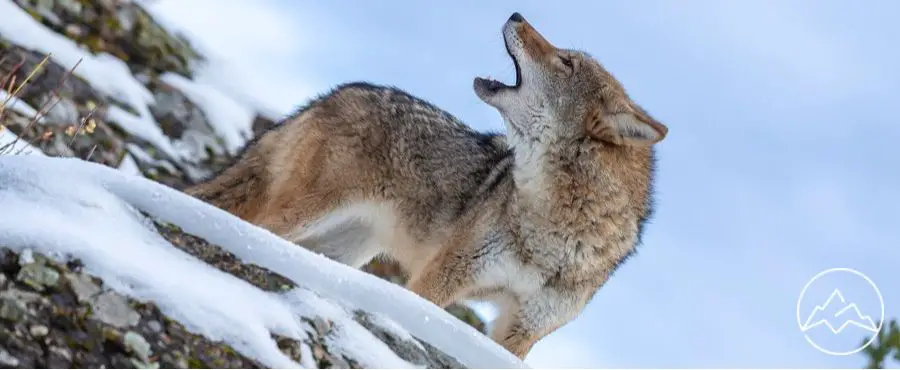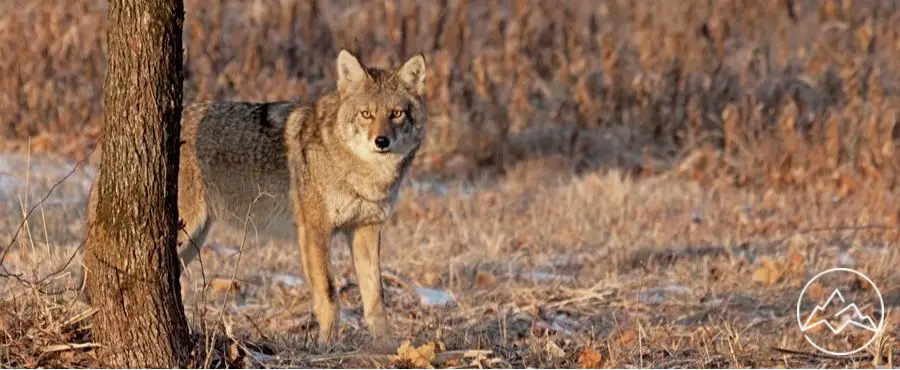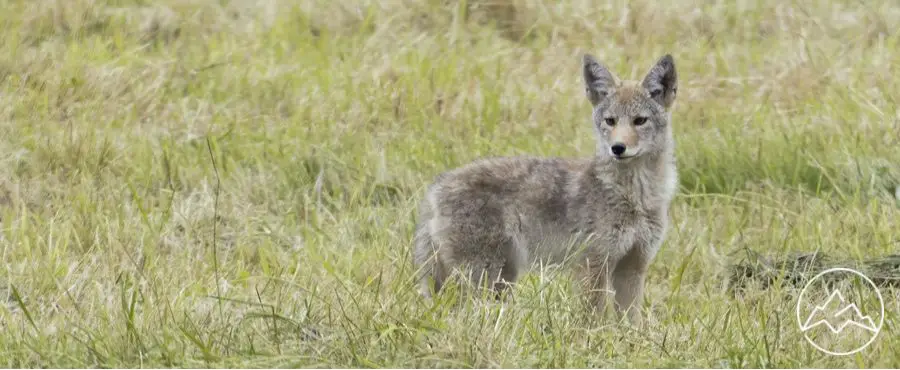Types of coyote calls
Coyotes are incredibly intelligent animals, and they have a variety of vocalizations that each mean something unique. There are three main types of calls – mouth-blown, electronic, and handheld – all of which can be employed when attempting to attract coyotes. It’s important to understand the differences between these calls as well as how each one should be used in order to give yourself the best chance at calling success.
Mouth-blown calls
Mouth-blown calls are typically made out of wood or metal with various reed configurations. They work by forcing air through them while cupping your hands around both ends in order to create a sound similar to an actual coyote call. These calls come in several variations, including bark howls, pup distress cries, cottontail distress cries, and even female invitation sounds; it’s important, however, not to overuse any particular type if you want maximum effectiveness from your calling attempts.
Electronic calls
Electronic calls replicate natural animal sounds such as prey distress and mating activities; they are especially effective when trying to locate multiple animals at once since their broadcast radius is much larger than other types of callers. The most common form is push-button electronic callers, which play prerecorded sounds at the touch of a button; some models also allow for recorded custom messages creating an arguably more realistic experience for potential targets nearby.
Hand-held calls
Finally, there are handheld caller devices that simulate live prey movements – making them great for attracting curious predators like coyotes looking for easy meals without needing too much effort on their part! Handheld caller devices use physical motion sensors like magnets or vibration transducers paired with remote controls so you can mimic small game fleeing across open terrain while staying safely concealed behind cover nearby; this technique has proven itself remarkably successful when done correctly! No matter what type you choose, knowing what kind of coyote call works best, combined with correct usage techniques, gives anyone willing enough time and plenty of opportunity to increase his/her chances at calling success!
Four coyote calls & when to use them
1. Prey distress
The prey distress call is arguably your best coyote call sound. Coyotes are omnivores and well-known for their opportunistic feeding, meaning they’ll prey on almost any animal within earshot. They’ll also scavenge inanimate objects if the need arises.
Rabbit distress, whitetail deer, mouse squeaks, and fawn distress calls are some of the most alluring calls you can have in your arsenal. However, most animals will do. The only caveat is the age and recent experience of the coyote (or coyotes) you call.For example, young, undispersed pups are bold and will readily answer to any distress sounds they hear. Adversely, the older, more experienced coyotes are much warier of predators. They’ll wait while other pack members scout the area, unseen. That’s why you must wait for at least 30 to 45 minutes after sending out prey calls.
When to use it:
Prey distress sounds can be used during any season, although it’s best when used during the fall and winter seasons. These seasons give you the advantage of the availability of younger and more brave coyotes. It’s my favorite call to use when predator hunting.
The prey distress call works in the springtime as well. However, spring is the breeding season for coyotes, which is when howling becomes the critical call.
2. Whines and yelps
Whines and yelps are the natural calls of coyote pups. They’re also your most effective call sounds next to distress calls. Whines and yelps also mimic social interactions and territorial behavior, and they can trigger parental instincts. This is especially true during the denning season when familial bonds are at their strongest. The coyote whine can communicate pain, hunger, or distress. The yelp most often communicates a submissive or startled response in the event of an attack or unpleasant surprise. Or, in the case of a young pup, distress.When to use it:
The best times to use whines and yelps for your coyote calling are the fall and winter when the coyote pups are still undispersed, and their parents are on high alert. Whining and yelping work just as well during the spring and summer seasons, as long as you combine it with other calls.
You’ll also want to diversify the volume and intensity of these calls to mimic both pups and adults to attract a broader range of coyotes.
3. Challenge howl
The “challenge howl,” also known as the “threat-bark howl,” is meant to fend off intruders. Coyotes don’t challenge other coyotes to fight; they use intimidation to force predators and other packs into submission and then run them out of town.
What makes the challenge howl useful is that it can draw out an entire pack of coyotes when used correctly. All you have to do is locate a pack’s core area. You can do this by paying close attention to their group howls and yips each night, which should allow you to zero in on their location.
Of course, when done hastily and incorrectly, you may end up on overlapping territory. That means a challenge howl can send multiple packs running away from you rather than towards you.
When to use it:
The challenge howl is useful throughout all seasons. The trick is to learn how to do it correctly. Otherwise, you run the risk of intimidating the pack into hiding.
4. Group and solo howls
Coyotes howl for a variety of reasons. Each howl consists of specific information about the singing coyote. Their age, sex, size, and emotional state can all be interpreted by their quivering cries and yips.
The solo howl is how they communicate with their packmates and other coyotes in the area to establish their territory. During springtime, the solo howl is also used to call out for potential mates.
The group howls are performed by the alpha males, with short howls from the betas and intercepting yips of the females. This calling sequence is done to bond and it creates an auditory fence around the pack’s territory, letting other packs in the area know their place.
The key to an effective coyote howl is understanding which is aggressive and which is nonaggressive. A solo, low-frequency, and high-pitched howl will mimic that of a younger beta. This is the nonaggressive howl that will pique their curiosity.
When to use it:
Solo howls are better for coyote calling, although pair and group howlings can be effective in getting the whole pack out to investigate. They can be used at any time but are most effective in the springtime, which is the mating season.Your best bet is to mix the solo howl with the prey distress call.
Understanding coyote behavior
The coyote is a wild canine native to North America, ranging from as far north as Alaska to Central America. These animals have learned to adapt to living in human-populated areas, making them an interesting species for study. Understanding their behavior is key for protecting both humans and the coyote population itself. Here are some basic behavior patterns of coyotes that anyone should know before interacting with these intelligent creatures.
Coyotes tend to roam alone or in pairs, except during mating season when they form large packs of up to 30 members. They usually hunt small game such as rabbits and rodents but will also scavenge from refuse piles if necessary. Coyotes also prefer living near water sources such as rivers or lakes, so it’s important for people living near these habitats to take extra precautions against attracting unwanted visitors like coyotes into their yards or properties.
One of the most fascinating aspects of understanding coyote behavior is learning about their vocalizations – specifically, the difference between distress calls and warning calls. A distress call is typically high-pitched and loud, indicating fear or alarm in response to nearby danger, while a warning call is lower-pitched and shorter in duration – signaling caution towards other members within its pack or alerting surrounding predators of a potential threat.
It is also important to understand the various vocalizations and postures that coyotes use when interacting with humans, as this can give us an insight into their behavior and help us better understand how to coexist without causing any danger. For example, if a coyote has its tail raised and is standing tall, it may be looking for food or territory; if it has its ears back and tail down, it could mean that the animal feels threatened by the presence of humans.
Knowing these behaviors is integral for people who want to call coyotes at night in order to hunt them – understanding their language will make calling much more successful. Furthermore, by familiarizing yourself with the general behavior patterns of these animals, you are able to identify signs of distress or caution which allows you to take steps necessary towards preventing harm either directed at yourselves or the animals themselves. All in all, understanding coyote behavior helps provides better safety measures for both man and beast alike.
The best coyote calls
It’s important to change up your coyote calling tactics with each season and the type of coyotes you’re hunting. For example, mountain coyotes are used to predators and will be more cautious than plains coyotes. Matching your call with the appropriate coyote hunting outing is a bit of knowledge, combined with a bit of trial and error.
Your best coyote call will come from scouting the pack, understanding their behavior, and practicing good woodsmanship. Remember, coyotes come out to fend off others, find food, and mate. Once you learn how to appeal to their needs via a call, you’ll be able to hunt coyotes with a much higher success rate.





